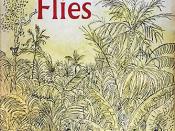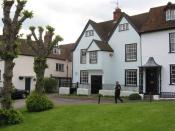Symbolism in Lord of The Flies, by William Golding
Schizophrenics. According to William Golding all humans are, to some degree, schizophrenic. This is the image he tries to present in his bleak novel, Lord of The Flies, in an attempt to trace the defects of society back to the defects of human nature. In order to complete this task, he uses fire to symbolize the id, and superego in humans.
Fire, in this thought-provoking novel, represents hope and evil. It shows that there can be two conflicting traits in a person, whether it be civility and savagery, or from a broader point of view, id and superego. Golding presents this two-sided internal war with explicit descriptions of fire, such as 'On one side the air was cool, but on the other, the fire thrust out a savage arm of heat...' (41). The savagery/id is represented by the savage heat, and the civility/superego is represented by the cool air.
By conflicting these two opposites, Golding makes it obvious to the reader that he is not merely describing a fire, he is describing human nature. He is describing that internal conflict of good and bad. He is describing that little imaginary angel with a halo fighting that little imaginary devil, complete with horns, a trident, and a spiked tail. He makes this obvious throughout the whole book.
Golding also tries to point out that if it was not for this conflict between id and superego then all humans would be bad. He uses Ralph in one scene to show this. Ralph sees a ship and is convinced that they will see the fire and stop at the island. But, the fire is out and Ralph's id takes over without the battling superego. 'The fire was dead... Ralph reached...


